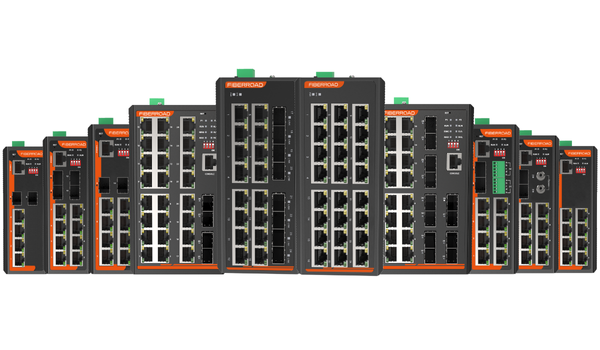What is the Industrial Internet of Things?
The Industrial Internet of Things (IIoT) refers to interconnected sensors, controllers and other devices. With a strong focus on machine-to-machine (M2M) communication, big data, and machine learning. The IIoT enables industries and enterprises to have better efficiency and reliability in their operations. The IIoT encompasses industrial applications, including robotics, medical devices, and software-defined production processes.
What is the difference between IIoT and IoT?
The Internet of things is B2C (business-to-consumer), and the Industrial Internet of Things is B2B (business-to-business). its focus is to improve an array of industrial processes, while IoT is mainly concerned with increasing consumer convenience. By looking closely at how each achieves its goal, we can get more details on how they differ.
Ability
Both IIoT and IoT employ connected devices, smart sensors, and wireless devices and joint with the internet, software, and cloud computing servers, but the application has major differences. IoT generally is simple, everyday domestic tasks. For Example, a security camera sends video to the monitoring platform when it detects an unfamiliar face. IIoT performs highly technical tasks with a stronger emphasis on precision, interoperability, and reliability. For example, IIoT systems help organizations track their assets using RFID tags as asset identifiers. The identifiers are linked to data about the asset — such as its serial number, model, cost, and area of use — all of which are stored in the cloud.
Reliability
Industrial internet networks support thousands of machines, controllers, robots, and other equipment with multiple endpoints spread over thousands of miles. Thus, there is little tolerance in IIoT for the failure of any system.
Security
Regarding the internet and the cloud, Ethernet is the dominant wired network technology with expanding IoT/IIoT deployment capabilities. IoT systems are primarily concerned with user privacy. Many consumer IoT devices lack robust preventative security defences, opening them up to hacks and widespread attacks via botnets. Industrial security needs to be ironclad to maintain reliability. No unauthorized persons should be able to hack industrial processes. An energy grid knocked out via an IIoT exploit, for example, can jeopardize everything from personal safety to the economy to national security. Thus, it is subjected to more compliance regulations, visibility, and overall risk.
Terminal Devices
For instance, in a consumer IoT system, inputs range from home security systems and wearable devices to smart kitchen appliances. While mobile devices are part of IIoT systems, likely endpoints include industrial tools like flow meters, pressure controllers, and environmental detectors.




The essential of the Industrial Internet of Things
Ethernet is defined by the IEEE standard 802.3 and specifies network functionality’s physical and data link layers. On the other hand, TCP/IP is a suite of protocols used on top of the Ethernet data link layer that enables communication over Ethernet. Moreover, TCP is the transport control protocol, which ensures data packets are delivered completely and error-free. IP is the internet protocol which routes data packets based on their IP address.
Industrial Ethernet
Industrial Ethernet refers to a set of protocols based on the standard Ethernet hardware (the physical and data link layers) and internet protocols (networking and transport layers), together with a proprietary application layer. The application layer protocol ensures the correct data is transmitted and received when and where it’s needed for a specific operation.

Glossary of Industrial Ethernet
Firstly, Industrial Ethernet protocols take one of three approaches to provide determinism with an Ethernet-based structure. The first such architecture — known as Standard Software/Standard Ethernet — uses standard Ethernet with the TCP/IP protocol but with mechanisms built into the top (application) layer to enable real-time communication. Ethernet/IP is based on this architecture.
Another architecture — Open Software/Standard Ethernet — uses standard Ethernet layers with new (standard) protocols that manage access to the network and synchronize the data sent from each node (device) to ensure priority data is sent first. Likewise, Ethernet POWERLINK uses this architecture.
The third architecture used by Industrial Ethernet protocols — Open Software/Modified Ethernet — is based on standard Ethernet hardware but uses new protocols and additional, complementary hardware to ensure determinism. EtherCAT, Modbus TCP, SERCOS III, and PROFINET IRT use this architecture, but with different hardware and transport mechanisms.
In addition to these architectural modifications, Industrial Ethernet often requires more robust hardware, such as cables and connectors, than standard Ethernet used to withstand the harsh environmental conditions in most industrial settings. Many Industrial Ethernet applications also require careful shielding, grounding, and filtering to handle electromagnetic interference (EMI, or noise) common in factory settings.
| Industrial Ethernet Protocol | Organization | Website |
|---|---|---|
| PROFINET | PNO | Probus.com |
| POWERLINK | ESPC | Ethernet-powerlinl.org |
| Ethernet/IP | ODVA | Odva.org |
| EtherCAT | ETG | Ethercat.org |
| SERCOS III | SERCOS International |
Sercos.org |
| MODBUS TCP | Modbus Organization |
Modbus.org |
| CC-Link IE | CLPA | CC-link.org |
Table 1. Industrial Ethernet Organizations






